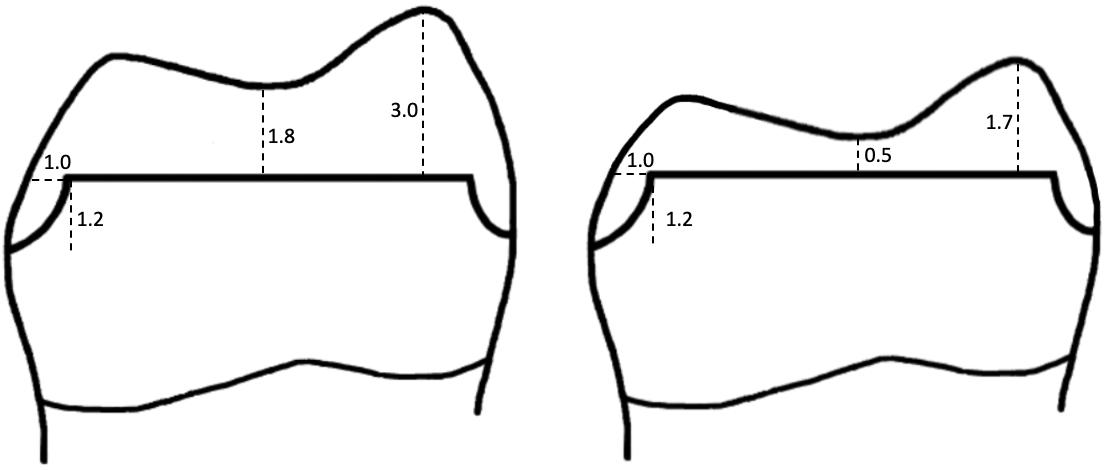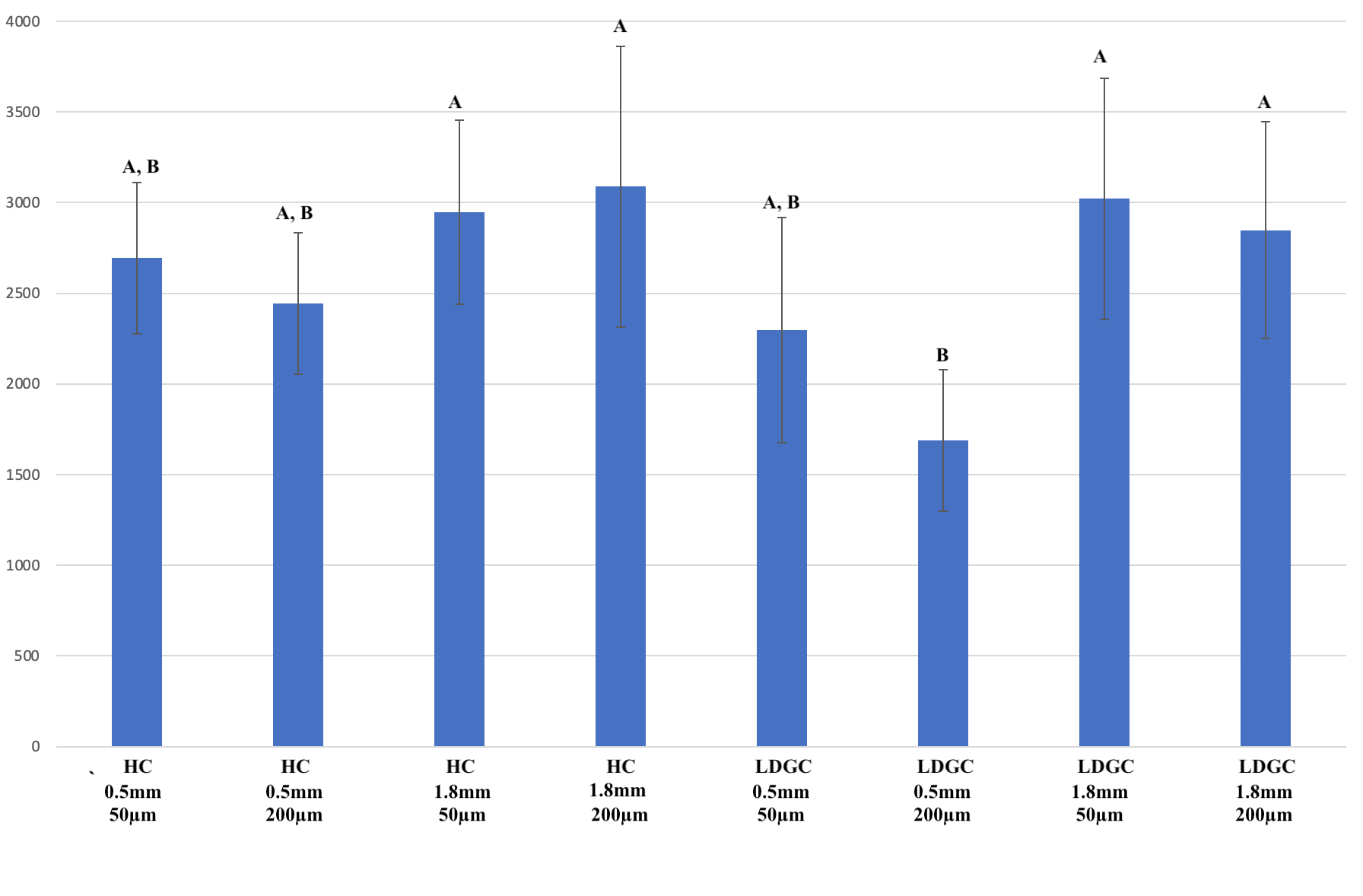IADR Abstract Archives
Effect of Cement Layer on Load-Bearing Capacity of Occlusal Veneers.
Objectives: The objective of this study was to evaluate the influence of cement layer thickness on load-bearing capacity of tooth restored with hybrid-ceramic (HC) and lithium-disilicate glass ceramic (LDGC) occlusal veneers.
Methods: Cement layer thickness was set at either 50µm or 200µm to study the effect of the thickness on load-bearing capacity of tooth restored either with 0.5mm or 1.8mm thick HC Cerasmart270 (GC) or LDGC IPS e.max CAD (Ivoclar Vivadent) occlusal veneers. 64 extracted human molar teeth were selected and divided into 8 groups (n=8/group) according to material selection and thicknesses of cement layer and veneer. Flat occlusal surface with chamfer was prepared to simulate minimally invasive tooth preparation. Preparations were scanned and occlusal veneers designed and milled using CAD/CAM technology (Cerec, Dentsply-Sirona). Finalized veneers were luted using self-adhesive resin cement (G-CEM ONE) to the preparations according to manufacturers’ instructions. Quasi-static loading test was used as testing method. The ultimate fracture load was recorded, and fracture types were analyzed and classified visually. Statistical analysis was performed by two-way ANOVA.
Results: With HC occlusal veneers, thickness of both veneer and cement layer had no significant influence on fracture load. In LDGC veneers, the lowest mean ultimate fracture load value was found in 0.5mm thick LDGC veneers group with 200µm cement layer, which was significantly lower loading value compared to that of 1.8mm thick veneers (p=0.0280) or any of HC veneers. LDGC veneers with 0.5mm thickness showed fractures within the veneer, whereas in other groups fractures of the tooth was also detected.
Conclusions: Within the limitations of this study, it can be concluded that thin HC occlusal veneers provided higher load-bearing capacity than LDGC counterparts of the same thickness. HC veneers were also less sensitive to the effect of cement layer thickness.
Methods: Cement layer thickness was set at either 50µm or 200µm to study the effect of the thickness on load-bearing capacity of tooth restored either with 0.5mm or 1.8mm thick HC Cerasmart270 (GC) or LDGC IPS e.max CAD (Ivoclar Vivadent) occlusal veneers. 64 extracted human molar teeth were selected and divided into 8 groups (n=8/group) according to material selection and thicknesses of cement layer and veneer. Flat occlusal surface with chamfer was prepared to simulate minimally invasive tooth preparation. Preparations were scanned and occlusal veneers designed and milled using CAD/CAM technology (Cerec, Dentsply-Sirona). Finalized veneers were luted using self-adhesive resin cement (G-CEM ONE) to the preparations according to manufacturers’ instructions. Quasi-static loading test was used as testing method. The ultimate fracture load was recorded, and fracture types were analyzed and classified visually. Statistical analysis was performed by two-way ANOVA.
Results: With HC occlusal veneers, thickness of both veneer and cement layer had no significant influence on fracture load. In LDGC veneers, the lowest mean ultimate fracture load value was found in 0.5mm thick LDGC veneers group with 200µm cement layer, which was significantly lower loading value compared to that of 1.8mm thick veneers (p=0.0280) or any of HC veneers. LDGC veneers with 0.5mm thickness showed fractures within the veneer, whereas in other groups fractures of the tooth was also detected.
Conclusions: Within the limitations of this study, it can be concluded that thin HC occlusal veneers provided higher load-bearing capacity than LDGC counterparts of the same thickness. HC veneers were also less sensitive to the effect of cement layer thickness.


